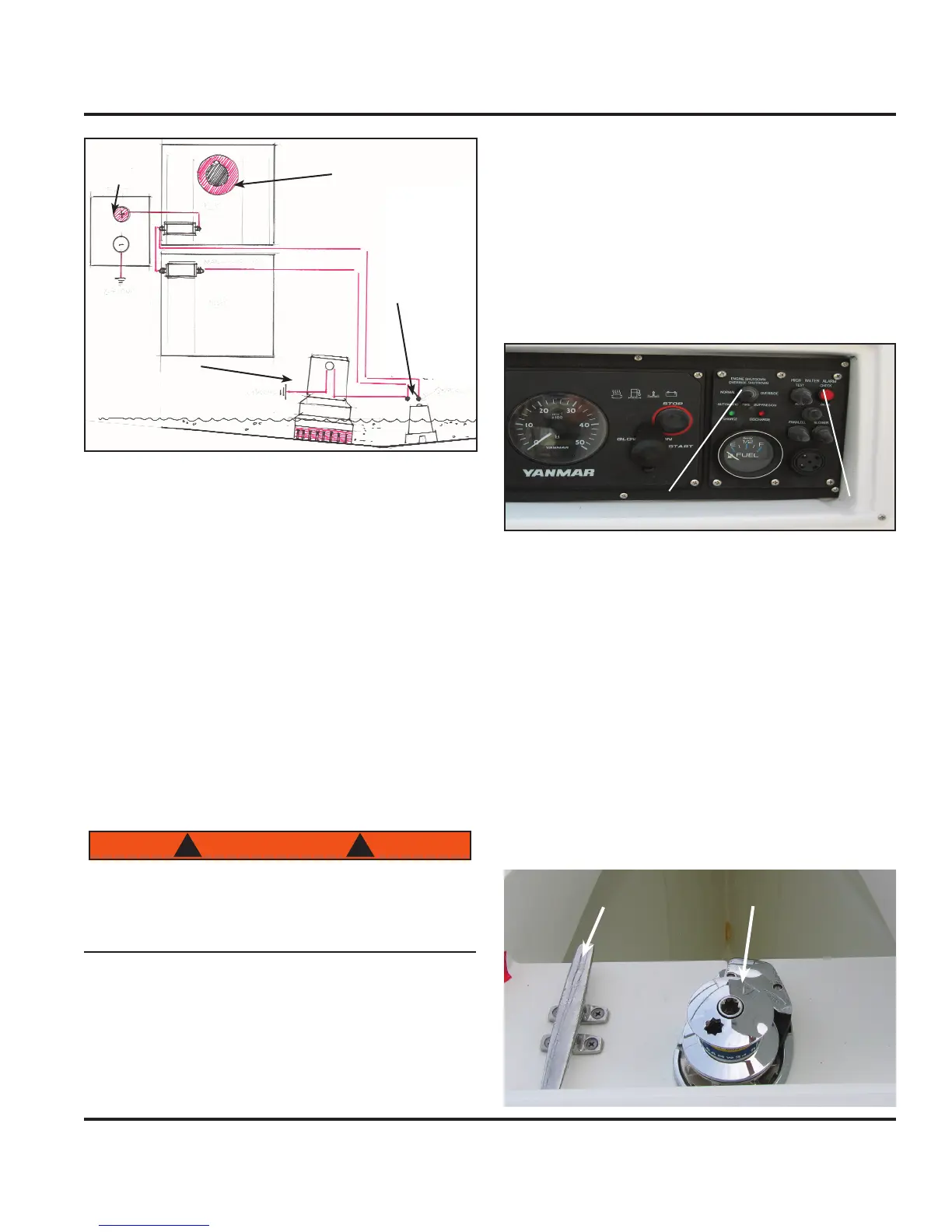DC Electric Systems
7.7
7.2.11 Ventilation
Ventilation is a very important issue with your boat, with
the potential for Carbon Monoxide buildup (See Boating
Safety Section), along with the simple comfort of fresh
air or air conditioning, ventilation is a standard that is a
necessity.
On your boat, there are essentially three types of ventila-
tion, the air conditioning system (AC system), the blower,
and the Bomar hatches, which supply you with fresh
air when opened. Since the air conditioning system is
AC powered (see AC Electric Section) and the hatches
require no power, we will detail the blower, and their func-
tion, here.
For blower location, consult your Mechanical Arrangement
illustration in the Boating Safety Section, or the Ventilation
illustration in the same section.
Fuel fumes in the engine compartment can explode.
Before working on electrical wiring, ventilate
engine room and disconnect battery cables to
prevent sparks.
The engine room blower is an exhaust fan which will
remove any exhaust fumes from the engine room, as well
as, removing heated air and will operate automatically
when engine key is turned on.
7.2.12 Fire Extinguishing Systems
In the engine room, there is a fire extinguishing bottle
installed. This system is DC powered with the relay, or
“module”, and the alarm at the helm station.
When a fire is detected on your boat, the alarm will sound
and set off the fire extinguishing bottle. This relay will shut
down the engines, and the blower. To reset the system,
activate the reset switch on the monitor at the helm. See
Fig. 7.9.
7.2.13 Shower Sump
The shower sump is part of the Sanitary System and
more information about the Shower Sump can be found
in that section. However, the breaker control for the
Shower Sump can be found on the MDP.
7.2.14 Windlass
Your boat may be equipped with an optional windlass. It
receives its power from the DC electrical system. The
windlass offers you the ability to raise and lower your
anchor. There is also a circuit breaker at the battery
switch. The windlass can be operated from the bow. See
manufacturer’s owner’s manual about the proper and
safe operating procedures. See Fig. 7.12.
Battery Switch
Power
Source
Float
Switch
Pump
Basic wiring diagram
Fig.7.8
Fig.7.10
Anchor tie off cleat Windlass
Fire Alarm High Water Alarm
Fig.7.9

